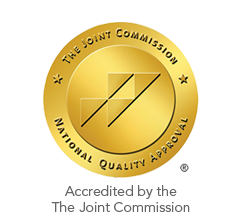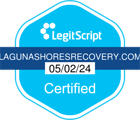What is Harm Reduction
Harm reduction programs operate with the assumption that people who use drugs are unable to quit or do not view their substance abuse as an issue. This philosophy aims to meet people where they are by promoting safer use, managed use, or abstinence. Harm reduction includes addressing social inequality and injustice, which decreases drug-related harm to vulnerable populations.
Harm reduction is not a treatment for addiction, however it can act as an avenue to treatment for those struggling with substance abuse.
Principles of Harm Reduction
Core Principals
The core principles state that an effective harm reduction practice:
Understands that drug abuse is complex and runs along a continuum, from severe abuse to total abstinence. It acknowledges that in some cases, abstinence is unlikely, and promoting safety over abstinence can reduce the negative personal and social consequences of drug abuse.
Establishes that successful policies and interventions that will promote quality of life and community health and wellbeing rather than focusing exclusively on abstinence.
Calls for non-judgmental and non-coercive administration of services and resources to people to help reduce potential harm.
Ensures that people who use drugs and those who are in recovery have a voice in the development of the programs and policies that are designed to serve them.
Affirms that the individual is the primary agent of reducing the negative consequences of their own drug use.
Seeks to empower people to share information and support each other to implement harm reduction strategies that meet their current conditions.
Recognizes that poverty, class, racism, trauma, discrimination, social isolation, and other social inequalities affect people’s vulnerability to drug abuse and their capacity to effectively deal with drug-related harm.
It does not minimize or ignore the real harm and danger associated with drug abuse.
Types of Harm Reduction Programs and How They Help
Overdose Prevention
Outreach
Practical Resources
Education for:
- The person with substance abuse disorder
- Family and friends
- First responders
- Service providers
- Community members
These prevention services result in greatly reduced overdose deaths.
Naloxone Distribution Programs
The DOPE Project
To date, the project has trained over 13,000 community members in the city on how to use naloxone. The DOPE Project partners with programs in the city that provide services to people who use drugs, such as syringe access (needle exchange) programs and Jail Health Services. These programs ensure naloxone gets distributed quickly to those who need it most.
Since its inception in 2001, naloxone distributed by the DOPE Project has reversed, on average, 1,500 overdoses each year. According to the Centers for Disease Control, organizations that provide naloxone kits to laypersons have increased considerably since 2010. There was a 243 percent increase in the number of local sites providing naloxone. There was also a 187 percent increase in the number of people given naloxone kits and a 160 percent increase in the number of reversals reported.3
Drug Education and Testing Programs
Fentanyl testing was pioneered at Vancouver, British Columbia’s Insite Safe Injection Facility. Over one month, 86 percent of all drugs tested by the program were positive for fentanyl. Johns Hopkins Bloomberg School of Public Health recently completed a study about fentanyl. Participants said that if they knew their drugs contained fentanyl, they would modify their behavior to reduce the risk.
The risk avoidance included:
Not using the drugs
Using drugs more slowly
Using drugs in the presence of someone with access to naloxone
Buying their drugs from another dealer.4
DanceSafe
Drug-testing services to prevent overdose
Safe spaces to engage in conversations about drug use and personal safety
Free water and electrolytes to prevent heatstroke and dehydration
Free earplugs to protect hearing
Unbiased and fact-based information on drugs and potential harms so that people can make informed decisions
Through the DanceSafe website, the public can purchase drug testing kits, get safety tips, and learn about the potentially harmful effects of different drugs.
Nightlife Empowerment
Promoting safer nightlife policies through partnerships with nightlife professionals, peers, harm reduction NGOs, the scientific community, and public institutions.
Exchanging information and tools to improve interventions and develop new responses to challenges in harm reduction while also promoting health and safety within party scenes.
Influencing nightlife policies through advocacy and conferences.
Housing First Programs
According to the National Alliance to End Homelessness, studies show that between 75 and 91 percent of people housed with a Housing First model remain in housing a year after moving in. Other research shows that permanent housing through a Housing First program saves communities an average of $31,545 per person in emergency services, including hospitals, jails, and emergency shelters.
Sex Education and Condom Distribution
Needle Exchange Program
Another benefit of needle exchange programs is that they serve as a contact point and resource. People in need can get medical or mental health care, housing, drug treatment, and other social services. They also help challenge the stigma and misinformation associated with drug abuse while prioritizing the dignity and rights of people with substance use disorders.
Needle Exchanges are Controversial
Needle exchange programs are very controversial. However, the National Institute on Drug Abuse (NIDA) points out that study after study shows that, despite what the critics say, these programs do not increase or promote drug use.5 They’re also not a public endorsement of drug abuse. The vast majority of people who inject drugs have a substance use disorder, which the NIDA reminds us, is a medical problem and not a moral failing. Without treatment, an intravenous drug user will likely not be able to stop on their own. Until proper help is offered, needle exchange programs can reduce the risk of HIV and hepatitis and slow the spread of the disease within the community.
Safe Injection Facilities
According to an article published in the journal Canadian Family Physician, evidence suggests that SIFs:
Reduce overdose deaths by 88% per 100,000 person-years.
Reduce ambulance calls to overdose emergencies by 63%.
Drastically reduce HIV infections.6
SIFs serve the purpose of reducing overdose deaths, but they also help connect people who abuse drugs to services like treatment, medical or mental health care, and housing. Research shows that people with substance use disorders who take advantage of SIFs engage in better self-care, reduce or stop their needle sharing, use drugs more safely, and reduce overall drug use.
Misconceptions About Harm Reduction
Myth: Harm Reduction Practices Condone Drug Abuse
Harm reduction operates under the reality-based assumption that people are going to use drugs regardless of others who “condone” their use. Since some individuals either can’t or won’t quit, the next best thing is to reduce the negative effects of drug abuse by making it as safe as possible. This protects both the individual and the community from the health and social consequences of drug use.
Myth: Harm Reduction Keeps People Using Drugs
Harm reduction is aimed at the large population of people who have not yet chosen abstinence. Far from perpetuating drug abuse, harm reduction practices like needle exchange programs and safe injection sites actually provide a pathway to recovery for those who want to stop. These programs provide information and resources to help people find treatment, housing, medical or mental health care, and other services needed for people to quit or reduce their use. Harm reduction proponents know that abstinence is ideal, but they also know that the reality is that not everyone is going to quit using drugs.
Myth: Equipping Police Officers With Naloxone to Reverse Overdoses is a Waste of Resources.
Opponents of arming police officers with naloxone say that police are charged with maintaining law and order–not saving “addicts.” But police are also charged with protecting and serving their communities. Police are often the first responders on the scene of an opioid overdose and may be the only thing standing between someone’s life and their death. According to the U.S. Attorney General, equipping officers with naloxone not only saves lives but also improves community relations, enhances information-gathering abilities, strengthens cross-agency communication; and creates a united front in the fight against opioid overdose.
The bottom line on harm reduction is that a large body of research is clear: Harm reduction prevents and reduces the spread of disease, reduces criminal activity, and reduces hospital costs associated with drug abuse.
Misconceptions About Methadone
Buy less. Buying a large amount of drugs makes it easy to end up using more than you planned. It may be more expensive to buy in smaller amounts, but it could also be safer, in the long run, to do so.
Set a time limit. If you’re headed out for a night of drinking or you plan to use drugs, choose a time to stop, then stick to it.
Reduce dosage or frequency. Take smaller doses of drugs, and dose less frequently than you normally would.
Eat before you start. Eating can help reduce the effects of alcohol and some drugs. Before you head out, eat a healthy meal and drink plenty of water.
Choose the safest method of use. Since injecting carries more risk than smoking, snorting, or swallowing the drug, avoid injecting whenever possible.
Choose your own pace. Don’t try to keep up with others when you’re out drinking or using drugs. Use at your own speed.
Cut back your use. If you drink or use drugs every day, try instituting one or more drug-free days each week.
Harm reduction helps protect individuals and communities against the ravages of unchecked drug abuse. It’s unlikely that drug abuse will disappear anytime soon, and doing everything possible to improve safety and promote access to treatment is the fundamental purpose of harm reduction. Harm reduction practices reduce overdose deaths, HIV and unintended pregnancies. They provide support in the right direction if and when people choose to quit.
If you are ready to reduce or end your substance use, but find that you need help, Laguna Shores Recovery can help.

 Matthew Beck B.A, M.A, LMFT
Matthew Beck B.A, M.A, LMFT 


